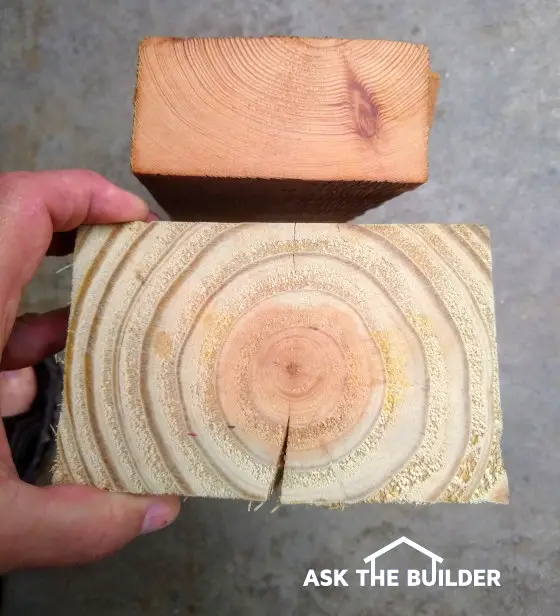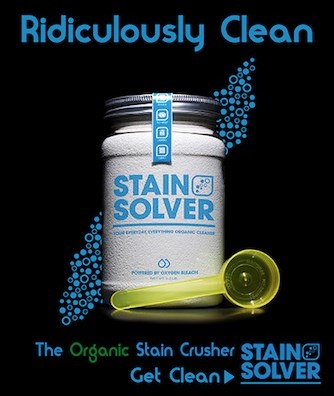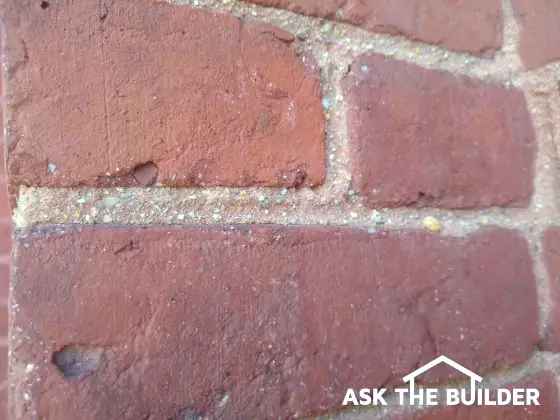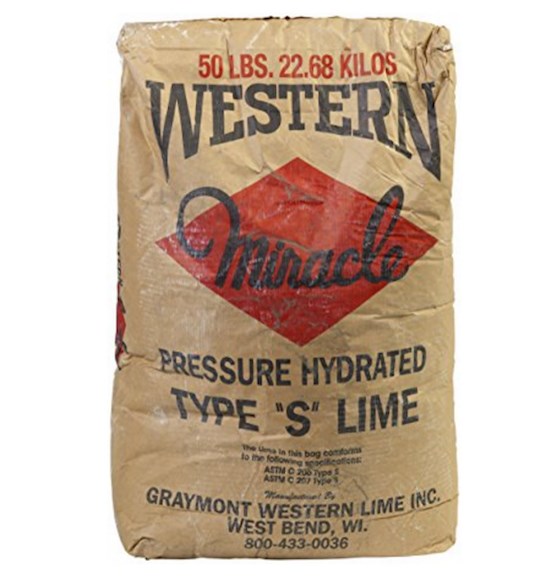Welcome! Maybe you just subscribed in the past few days. This top spot in the newsletter is reserved seating for all new subscribers!
But if your first AsktheBuilder newsletter might have been issue #68, I’m so glad you keep coming back for more! BTW, that’s one of the biggest mistakes I’ve made over the years, not having an issue #. I actually have no idea how many newsletters I’ve sent, but it’s more than the pieces of Good & Plenty that you'd find in a giant bag. Arrrggghhh.
Anyway, you may remember when I exposed how the major paint companies employ, in my opinion, unethical practices to hawk products hoping you buy them. Do you recall that? CLICK or TAP HERE and leave a comment at the bottom of the page sharing how you might have gotten bamboozled like tens of thousands of others.
This Issue’s Music
I love music, all sorts of music. I listen to a wide variety as I compose this newsletter for you. I GUARANTEE YOU that you’ve never heard this song played outdoors. If you’ve got any troubles that you need to dump in a basket on your desk, listening to this will pipe them away in a hurry. CLICK or TAP HERE and be amazed. If you like what you hear, leave a comment at the bottom of the page for goodness sake!
Hurricane Isaias
Late summer and early fall, I do my best to save you from grief and frustration. Monster storms can create flooding, wind damage, etc. anywhere across the central and eastern USA. Hurricane Isaias is growing into a menacing storm as I write this.

Please understand that fire and police departments classify your home as the LEAST VALUABLE asset in your community. Your fire department and police department will probably NEVER SHOW UP TO HELP YOU should you get into trouble in a natural disaster.
They have limited resources and during and after a major catastrophe these are focused on valuable assets many rely on in your community. Examples might be:
- Hospitals
- Grocery stores
- Fuel depots
- Building supplies
Your house is far down the list way at the bottom. No one cares about you and your house except you. This means YOU need to do what’s necessary RIGHT NOW to protect yourself and your possessions. CLICK or TAP HERE for a list of things I have in my home so I’m prepared for anything.
BTW, this advice applies to you no matter where you live. You might be susceptible to wildfires, earthquakes, tsunamis, cats and dogs living together, etc. Be prepared!
Phil in Australia
I’ve been blessed over the years to become really good friends with lots of people all because of this newsletter. The list is quite long.
Phil deserves the award for long-distance coupled with offering great suggestions about how to improve Ask the Builder. We started to communicate via email years ago and continue to this day. I’d so love to go Down Under and meet Phil, as well as Russell, Patricia, and quite a few Australians who regularly correspond with me.
When I blurted out the Stain-Solver-Back-in-Stock blast a few days ago, Phil responded:
“Tim, I long for the day that I can have Stain Solver in my cupboard in Melbourne. You should let the USA folks reading your newsletter know how lucky they are to be able to order it.
All the best,
Phil”
Well, thanks, Phil (I’m trying not to blush). Phil might be shocked by the following estimate. I’d guess less than 3 percent of my newsletter subscribers have ever purchased Stain Solver.
Perhaps you can help! If you’re a satisfied Stain Solver customer, reply back to me with one or two of your best success stories. What did Stain Solver save that you thought was ruined forever? It’s time for show and tell.
Your story might convert a subscriber and we’ll start saving their stuff too!
I’ve done surveys before and believe it or not the most common reason I hear is, “Your Stain Solver sounds TOO GOOD to be true. There's NO WAY a cleaner can do what you say!”
Well, photos don’t lie. Look at how it cleaned this stained Corian sink with NO SCRUBBING!


I don’t quite know how to respond to folks that are non-believers other than to show some of the dramatic before/after photos as you see above.
Even then, I imagine folks might think they’ve been photoshopped. Those sink photos were not altered. CLICK or TAP HERE to read the story sent in by John about the Corian sink. His daughter Emily was the one who transformed the sink.
With all that said, now is a GREAT time to try out Stain Solver.
Why?
It’s now back in stock after being SOLD OUT for nearly ten weeks.
I also have the ODD SALE going on now to celebrate we have product to sell. You can get either 5, 7, or 9 percent off depending on which size you buy. The more you purchase, the more you save.
CLICK or TAP HERE to place your order.
The ODD SALE WILL ONLY LAST A WEEK.
New RAPID-ALERT Notification Feature
I activated a new feature on the website that you may find quite interesting.
Rather than wait for me to share in a newsletter what’s new on the website, you can get a cute little announcement on your computer, tablet, or phone. You just click it and BOOM you’re taken right to the new column, video, or product review.
I signed up myself so I could see what it all looks like. When you visit the website now, you should see this:

If you click YES, then you might see:

You need to click ALLOW.
Then once I load a new column within SECONDS you might see:

It’s really wonderful technology and you’ll now see EVERY NEW thing I create seconds after I upload it.
Try it yourself and let me know what you think. I know it works on Chrome and Safari browsers and my guess is on others. I hope you don’t run into issues. You may not see the signup box if you have ad-blocking software running.
You need to know there are hundreds of past columns, videos, product reviews, etc. that I’ve never shared here in the newsletter for a host of reasons. Yes, there’s lots of content BURIED at the website just waiting for you to discover it.
You won’t need to search if you activate this new feature.
Speaking of tool reviews, check out this one about the Klein 1/2-inch Compact Impact Driver.
Old vs New - Which is Better?
Please peer at this photo:

What do you know about tree growth rings? What do you know about modern electric cable? Do you really think you know everything about concrete?
CLICK or TAP HERE and get ready to be wowed. Did you take a debate class in high school? This column will bring back memories for sure.
That’s quite enough for a Sunday.
Tim Carter
Founder - www.AsktheBuilder.com
We’re BACK IN BIZ - www.StainSolver.com
DX at 5 watts - www.W3ATB.com
Do It Right, Not Over!
P.S. CLICK or TAP HERE if you want to see a cool wainscotting kit.













